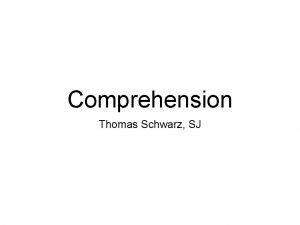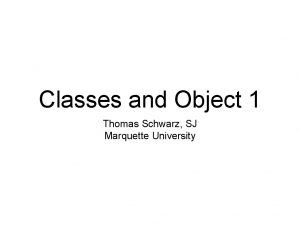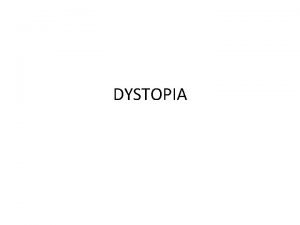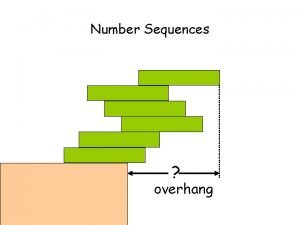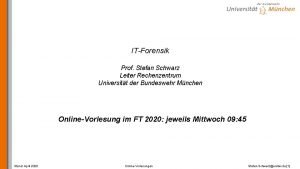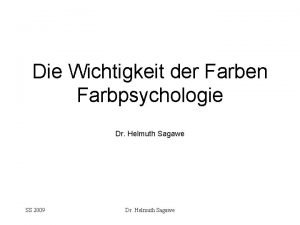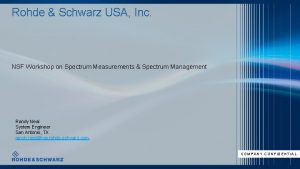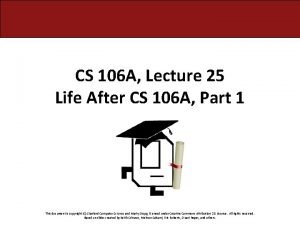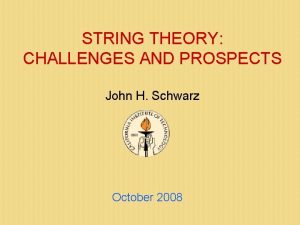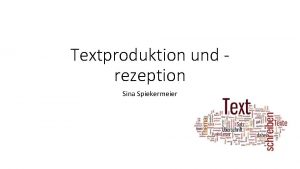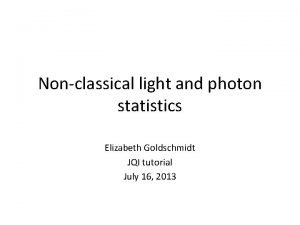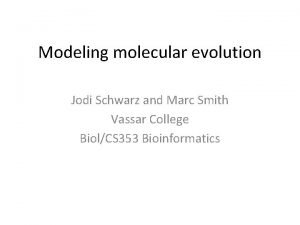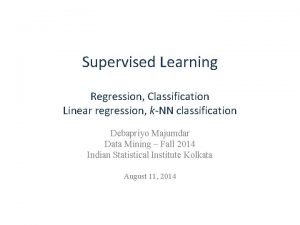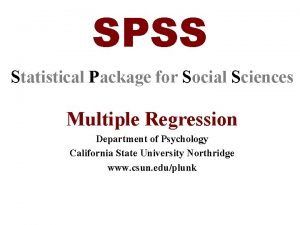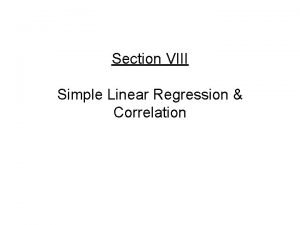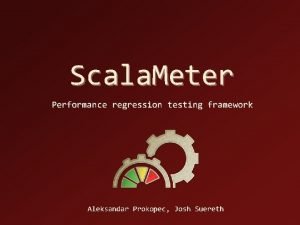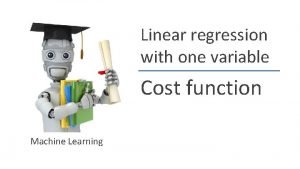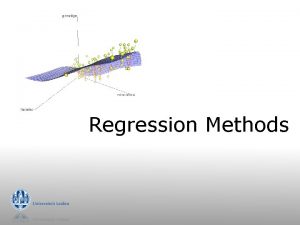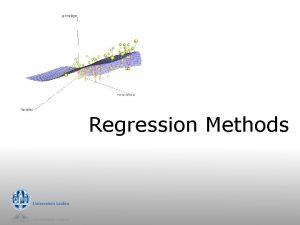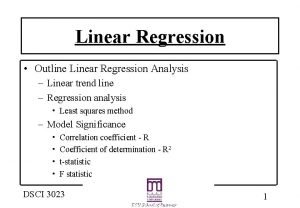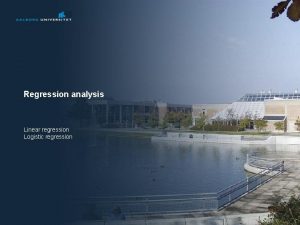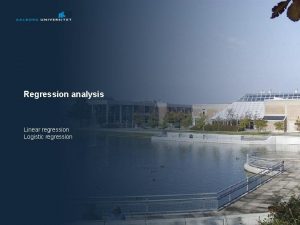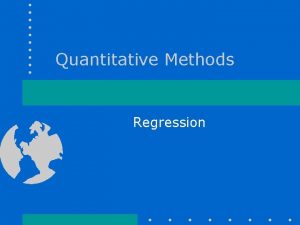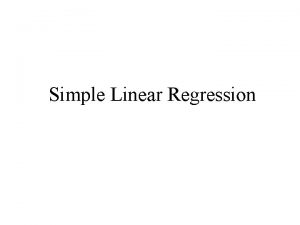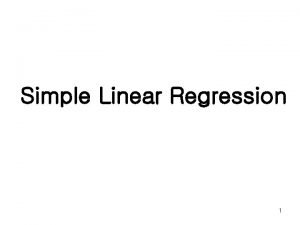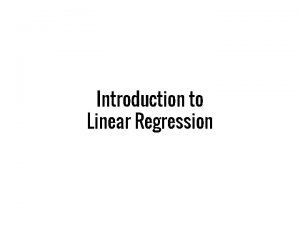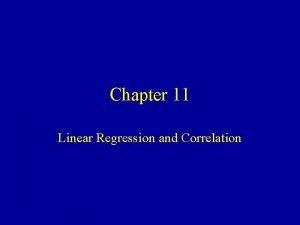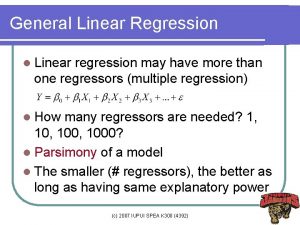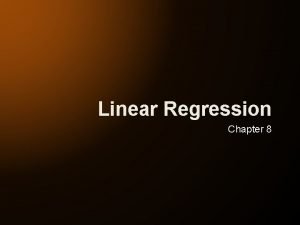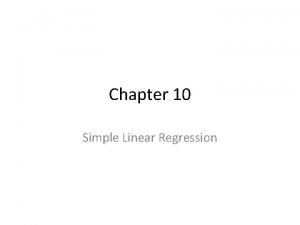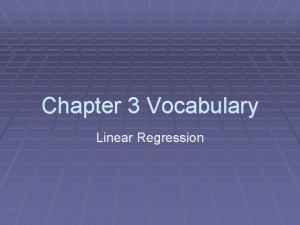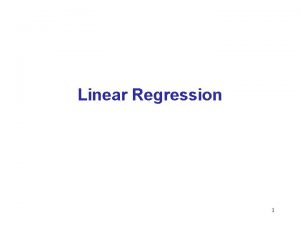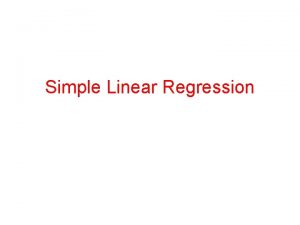Linear Regression Thomas Schwarz SJ Linear Regression Sir












































- Slides: 44

Linear Regression Thomas Schwarz, SJ

Linear Regression • Sir Francis Galton : 16 Feb 1822 — Jan 17 1911 • Cousin of Charles Darwin • Discovered "Regression towards Mediocrity": • • Individuals with exceptional measurable traits have more normal progreny If parent's trait is at from , then progeny has traits at from • is the coefficient of correlation between trait of parent and of progeny

Linear Regression

Statistical Aside • Regression towards mediocrity does not mean • • Differences in future generations are smoothed out It reflects a selection biases • Trait of parent is mean + inherited trait + error • • The parents we look at have both inherited trait and error >>0 Progeny also has mean + inherited trait + error • But the error is now random, and on average ~ 0.

Statistical Aside • Example: • You do exceptionally well in a chess tournament • • Result is Skill + Luck You probably will not do so well in the next one • Your skill might have increased, but you cannot expect your luck to stay the same • It might, and you might be even luckier, but the odds are against it

Review of Statistics • We have a population with traits • We are interested in only one trait • • We need to make predictions based on a sample, a (random) collection of population members We estimate the population mean by the sample mean • • We estimate the population standard deviations by the (unbiased) sample standard deviation •

Unbiased ? • Normally distributed variable with mean and st. dev. • • Take sample Calculate Turns out: expected value for is less than Call the degree of freedom

Forecasting • Mean model • We have a sample • • We predict the value of the next population member to be the sample mean What is the risk? • Measure the risk by the standard deviation

Forecasting • Normally distributed variable with mean and st. dev. • • • Take sample What is the expected squared difference of and : "Standard error of the mean" •

Forecasting • • Forecasting Error of : Two sources of error: • • • We estimate the standard deviation wrongly is on average one standard deviation away from the mean Expected error model error parameter error

Forecasting • There is still a model risk • We just might not have the right model • The underlying distribution is not normal

Confidence Intervals • Assume that the model is correct • • Simulate the model run times The x-confidence interval then • contains x% of the runs contain the true value

Confidence Intervals • Confidence intervals usually are • Contained in t-tables and depend on sample size

Student t-distribution • Gossett (writing as "Student") • Distribution of • With increasing comes close to normal distribution

Student-t distribution

Simple Linear Regression • Linear regression uses straight lines for prediction • Model: • • • "Causal variable" , "observed variable" Connection is linear (with or without a constant) There is an additive "error" component • • • Subsuming "unknown" causes With expected value of 0 Usually assumed to be normally distributed

Simple Linear Regression • Model:

Simple Linear Regression • Assume Minimize Take the derivative with respect to and set it to zero:

Simple Linear Regression • Assume Minimize Take the derivative with respect to and set it to zero:

Simple Linear Regression From previous, we know Our formula becomes

Simple Linear Regression • This finally gives us a solution:

Simple Linear Regression • Measuring fit: Calculate the sum of squares Residual sum of squares Coefficient of determination

Simple Linear Regression • can be used as a goodness of fit • • • Value of 1: perfect fit Value of 0: no fit Negative values: wrong model was chosen

Simple Linear Regression • Look at residuals: • • Determine statistics on the residuals Question: do they look normally distributed?

Simple Linear Regression • • Example 1: brain sizes versus IQ • A number of female students were given an IQ test • They were also given an MRI to measure the size of their brain Is there a relationship between brains size and IQ? Verbal. IQ 132 90 136 90 129 120 100 71 132 112 129 86 90 83 126 90 129 86 Brain Size 816. 932 951. 545 928. 799 991. 305 854. 258 833. 868 856. 472 878. 897 865. 363 852. 244 808. 02 790. 619 831. 772 798. 612 793. 549 866. 662 857. 782 834. 344 948. 066 893. 983

Simple Linear Regression • Can use statsmodels import statsmodels. api as sm df = pd. read_csv('brain-size. txt', sep = 't') Y = df['Verbal. IQ'] X = df['Brain Size'] X = sm. add_constant(X) model = sm. OLS(Y, X). fit() predictions = model. predict(X) print(model. summary())

Simple Linear Regression • Gives a very detailed feed-back OLS Regression Results ======================================= Dep. Variable: Verbal. IQ R-squared: 0. 065 Model: OLS Adj. R-squared: 0. 013 Method: Least Squares F-statistic: 1. 251 Date: Thu, 02 Jul 2020 Prob (F-statistic): 0. 278 Time: 16: 22: 00 Log-Likelihood: -88. 713 No. Observations: 20 AIC: 181. 4 Df Residuals: 18 BIC: 183. 4 Df Model: 1 Covariance Type: nonrobust ======================================= coef std err t P>|t| [0. 025 0. 975] ---------------------------------------const 24. 1835 76. 382 0. 317 0. 755 -136. 288 184. 655 Brain Size 0. 0988 0. 088 1. 119 0. 278 -0. 087 0. 284 ======================================= Omnibus: 5. 812 Durbin-Watson: 2. 260 Prob(Omnibus): 0. 055 Jarque-Bera (JB): 1. 819 Skew: -0. 259 Prob(JB): 0. 403 Kurtosis: 1. 616 Cond. No. 1. 37 e+04

Simple Linear Regression • Interpreting the outcome: Omnibus: Prob(Omnibus): Skew: Kurtosis: • • Durbin-Watson: Jarque-Bera (JB): Prob(JB): Cond. No. Are the residuals normally distributed? Omnibus: test for skew and kurtosis • • 5. 812 0. 055 -0. 259 1. 616 Should be zero In this case: Probability of this or worse is 0. 055 2. 260 1. 819 0. 403 1. 37 e+04

Simple Linear Regression • Interpreting the outcome: Omnibus: Prob(Omnibus): Skew: Kurtosis: • • 5. 812 0. 055 -0. 259 1. 616 Durbin-Watson: Jarque-Bera (JB): Prob(JB): Cond. No. Are the residuals normally distributed? Durbin-Watson: tests homoscedasticity • Is the Variance of the errors consistent 2. 260 1. 819 0. 403 1. 37 e+04

Simple Linear Regression • Homoscedasticity • Observe that variance increases

Simple Linear Regression • Interpreting the outcome: Omnibus: Prob(Omnibus): Skew: Kurtosis: • 5. 812 0. 055 -0. 259 1. 616 Durbin-Watson: Jarque-Bera (JB): Prob(JB): Cond. No. Jarque-Bera: • • Tests skew and kurtosis of residuals Here acceptable probability 2. 260 1. 819 0. 403 1. 37 e+04

Simple Linear Regression • Interpreting the outcome: Omnibus: Prob(Omnibus): Skew: Kurtosis: • 5. 812 0. 055 -0. 259 1. 616 Durbin-Watson: Jarque-Bera (JB): Prob(JB): Cond. No. Condition number • Indicates either multicollinearity or numerical problems 2. 260 1. 819 0. 403 1. 37 e+04

Simple Linear Regression • Plotting my_ax = df. plot. scatter(x='Brain Size', y='Verbal. IQ') x=np. linspace(start=800, stop=1000) my_ax. plot(x, 24. 1835+0. 0988*x)

Simple Linear Regression

Simple Linear Regression • scipy has a stats package from scipy import stats df = pd. read_csv('brain-size. txt', sep = 't') Y = df['Verbal. IQ'] X = df['Brain Size'] x = np. linspace(800, 1000) slope, intercept, r_value, p_value, std_err = stats. linr

Simple Linear Regression • plotting using plt. plot(X, Y, 'o', label='measurements') plt. plot(x, intercept+slope*x, 'r: ', label='fitted') plt. legend(loc='lower right') print(slope, intercept, r_value, p_value) plt. show()

Simple Linear Regression

Multiple Regression • Assume now more explanatory variables

Multiple Regression • Seattle Housing Market • Data from Kaggle df = pd. read_csv('kc_house_data. csv') df. dropna( inplace=True)

Multiple Regression • Linear regression: price — grade

Multiple Regression • Can use the same Pandas recipes df = pd. read_csv('kc_house_data. csv') df. dropna( inplace=True) Y = df['price'] X = df[ ['sqft_living', 'bedrooms', 'condition', 'wate model = sm. OLS(Y, X). fit() predictions = model. predict(X) print(model. summary())

Multiple Regression OLS Regression Results ============================================ Dep. Variable: price R-squared (uncentered): 0. 857 Model: OLS Adj. R-squared (uncentered): 0. 857 Method: Least Squares F-statistic: 3. 231 e+04 Date: Thu, 02 Jul 2020 Prob (F-statistic): 0. 00 Time: 20: 47: 11 Log-Likelihood: -2. 9905 e+05 No. Observations: 21613 AIC: 5. 981 e+05 Df Residuals: 21609 BIC: 5. 981 e+05 Df Model: 4 Covariance Type: nonrobust ======================================== coef std err t P>|t| [0. 025 0. 975] ---------------------------------------sqft_living 303. 8804 2. 258 134. 598 0. 000 299. 455 308. 306 bedrooms -5. 919 e+04 2062. 324 -28. 703 0. 000 -6. 32 e+04 -5. 52 e+04 condition 3. 04 e+04 1527. 531 19. 901 0. 000 2. 74 e+04 3. 34 e+04 waterfront 7. 854 e+05 1. 96 e+04 40. 043 0. 000 7. 47 e+05 8. 24 e+05 ======================================= Omnibus: 13438. 261 Durbin-Watson: 1. 985 Prob(Omnibus): 0. 000 Jarque-Bera (JB): 437567. 612 Skew: 2. 471 Prob(JB): 0. 00 Kurtosis: 24. 482 Cond. No. 2. 65 e+04 =======================================

Multiple Regression • sklearn from sklearn import linear_model df = pd. read_csv('kc_house_data. csv') df. dropna( inplace=True) Y = df['price'] X = df[ ['sqft_living', 'bedrooms', 'condition', ' regr = linear_model. Linear. Regression() regr. fit(X, Y) print('Intercept: n', regr. intercept_) print('Coefficients: n', regr. coef_)

Polynomial Regression • • What if the explanatory variables enter as powers? Can still apply multi-linear regression
 Simple linear regression and multiple regression
Simple linear regression and multiple regression Thomas schwarz marquette
Thomas schwarz marquette Thomas schwarz marquette university
Thomas schwarz marquette university Logistic regression vs linear regression
Logistic regression vs linear regression Logistic regression vs linear regression
Logistic regression vs linear regression Multiple linear regression
Multiple linear regression Theme of farewell love by wyatt
Theme of farewell love by wyatt Sir thomas more's fruitopia
Sir thomas more's fruitopia Sir thomas wyatt they flee from me
Sir thomas wyatt they flee from me Elizabeth walsh
Elizabeth walsh Whoso list to hunt poem
Whoso list to hunt poem Grave matron definition
Grave matron definition Sir thomas more utopia summary
Sir thomas more utopia summary A day of destiny by sir thomas malory
A day of destiny by sir thomas malory Nrpz
Nrpz Kilian schwarz
Kilian schwarz Am-gm inequality
Am-gm inequality Satz von schwarz thermodynamik
Satz von schwarz thermodynamik Unibw rechenzentrum
Unibw rechenzentrum Fswp8
Fswp8 Karlheinz schwarz
Karlheinz schwarz Farbpsychologie grün
Farbpsychologie grün Rohde & schwarz usa, inc.
Rohde & schwarz usa, inc. Cs 106
Cs 106 Cauchy-schwarz inequality proof inner product
Cauchy-schwarz inequality proof inner product String schwarz
String schwarz Kilian schwarz
Kilian schwarz Peter fox schwarz zu blau text
Peter fox schwarz zu blau text Alexandra schwarz schilling
Alexandra schwarz schilling Flagge schwarz grün rot
Flagge schwarz grün rot Elizabeth goldschmidt
Elizabeth goldschmidt Jodi schwarz
Jodi schwarz Schwarz christoffel mapping examples
Schwarz christoffel mapping examples Teorema di schwarz
Teorema di schwarz Reto schwarz
Reto schwarz Pathologist and anthropologist
Pathologist and anthropologist Knn linear regression
Knn linear regression Hierarchical multiple regression spss
Hierarchical multiple regression spss Linear regression riddle b
Linear regression riddle b Scalameter
Scalameter Logistic regression interaction interpretation
Logistic regression interaction interpretation Rumus regresi linear
Rumus regresi linear Mahalanobis distance spss
Mahalanobis distance spss Linear regression cost function
Linear regression cost function Linear regression with multiple features
Linear regression with multiple features

